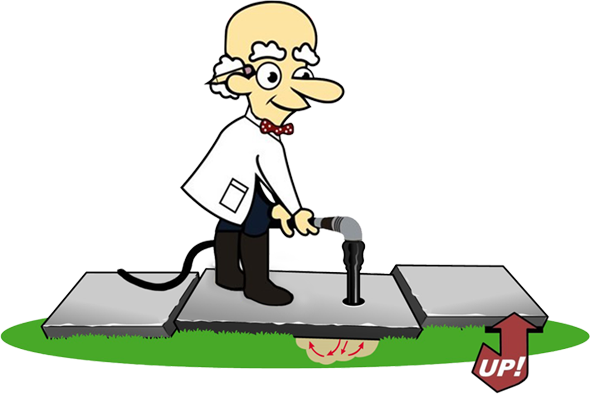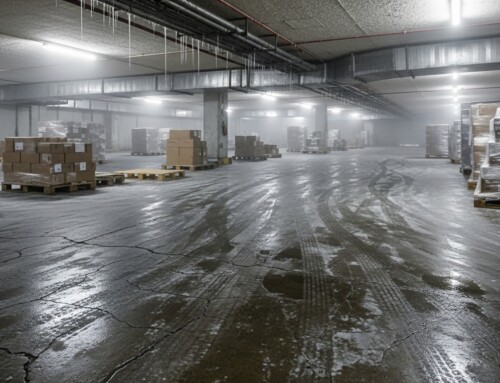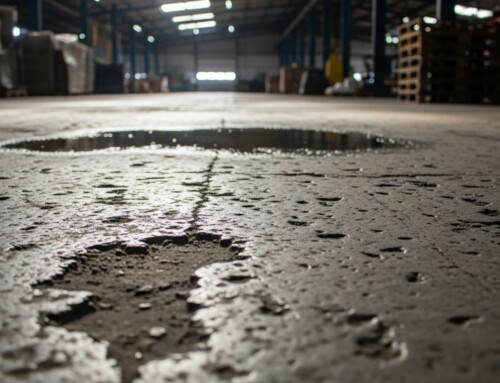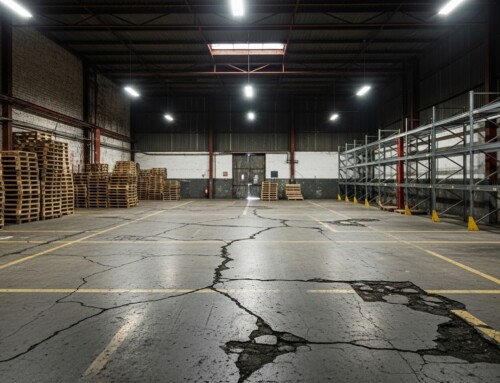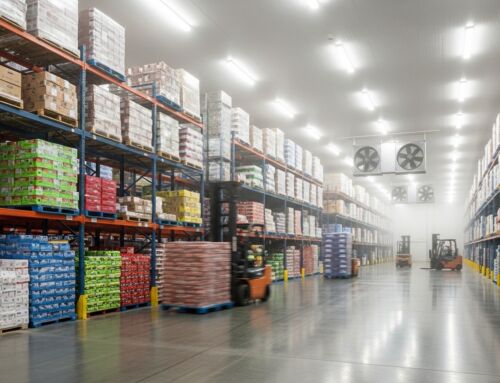IN THIS ARTICLE
Discover valuable tips to keep your warehouse concrete floor from mold invasion.
Mold can be a serious problem for warehouse concrete floors, leading to safety hazards, structural damage, and costly repairs. At Warehouse Concrete Floor Repair, we specialize in fixing or replacing faulty warehouse concrete floors, but we’ve got some helpful tips for you. Know how important it is to keep your floors dry, clean, and mold-free.
By taking the proper preventive steps, you can protect your warehouse from mold invasion and maintain a safe working environment. Stay ahead of the problem with these expert tips to keep your concrete floors in top condition.
How To Get Rid of Mold on Warehouse Concrete Floor: Step-by-Step Guide
Identify the sources of moisture causing mold growth.
To combat mold in your warehouse effectively, start by tracking down where the moisture is coming from. Check for leaking pipes, condensation build-up, and any areas where rainwater may seep in. Also, look at how your goods are stored—improper packaging can also introduce moisture. Be sure to inspect the roof and walls for any signs of damage that might allow water infiltration.
Consider having professionals conduct a thorough assessment of your heating, ventilation, and air conditioning system to ensure it isn’t contributing to excess humidity. Look for standing water and rectify the issue immediately to prevent future mold growth.
Dry out the affected areas entirely before treatment
Before you tackle the mold, ensure the affected areas are bone dry. Inadequate drying can lead to a resurgence of mold, wasting time and resources. Use dehumidifiers to pull moisture from the air and keep humidity levels low. In tandem, deploy high-volume fans to boost air circulation, speeding up the drying process.
If possible, allow natural sunlight to hit the floor, as UV rays are excellent at drying and disinfecting. However, be patient, as complete drying can take time, particularly if the concrete is deeply saturated. Only proceed with treatment once you’re confident the area is thoroughly dry.
Choose the right cleaning solutions for concrete surfaces.
Selecting the appropriate cleaning solution is crucial for effective mold removal from concrete surfaces. Opt for non-ammonia cleaners specially formulated for concrete; these are designed not to damage the surface while eradicating mold. For an eco-friendly approach, you might consider a mix of vinegar and water or baking soda solutions, which can kill minor mold.
Always read the manufacturer’s instructions and safety guidelines before using any commercial product. Test the solution on a small, inconspicuous area to ensure it doesn’t discolor or damage the concrete. When handling cleaning chemicals, it is also vital to wear protective gear, such as gloves and masks.
Scrub the moldy spots thoroughly with appropriate tools
Once you have your chosen cleaning solution ready, it’s time to roll up your sleeves and scrub away the mold. Use a stiff-bristled brush or a broom to really get into the texture of the concrete and dislodge the mold’s hold. For larger areas, a mechanized brush attached to a floor cleaner can save time and effort.
Apply enough pressure to remove the mold without damaging the surface. After scrubbing, rinse the area thoroughly with water to remove any residual mold or cleaner. It’s important to let the floor dry completely before proceeding to the next step to ensure that all mold has been eradicated.
Apply mold-inhibiting solutions to prevent future growth
Ensuring future mold prevention is as important as getting rid of it. After the floor is cleaned and dried, apply a mold inhibitor designed for concrete surfaces. These solutions create a barrier that deters mold growth and provides lasting protection.
When choosing a mold-inhibiting product, look for one that’s environmentally safe and suited for high-traffic areas, given that warehouses typically see a lot of activity. Apply it according to the manufacturer’s directions, often with a sprayer or roller for even coverage. Allow the inhibitor to dry entirely for maximum effectiveness.
Regularly inspect for signs of mold and address promptly
Regular inspections form the backbone of your mold prevention strategy. Keep a keen eye out for early signs of mold, such as musty odors or discoloration on your concrete floors. Mold can sometimes be mistaken for dirt or stains, so scrutinize any suspicious spots closely.
Create a routine inspection schedule, checking known trouble spots more frequently. If you have an in-house maintenance team, train them on what to look for. Should you discover mold, act swiftly to clean the area and address the moisture source.
Documenting your findings during inspections can help track patterns and potential problem areas. By staying vigilant, you can catch mold before it becomes a significant threat.
Schedule routine cleaning and maintenance for best results
In addition to the cleaning routine, periodic deep cleans with a power washer or professional cleaning services can be highly beneficial, especially in damp or high-humidity areas. Maintenance should also include checking for cracks or damage to the concrete where water can collect and seep in, providing a perfect habitat for mold.
Remember, proactive and regular maintenance not only prevents mold growth but also extends the life of your warehouse floors.
How To Prevent Mold on Warehouse Concrete Floors
Maintaining mold-free concrete floors in your warehouse begins with understanding that prevention is key. First, control the humidity levels; an industrial-grade dehumidifier can be a worthwhile investment for large spaces. Second, ensure adequate ventilation, including using exhaust fans and keeping doors open when weather permits.
Proper drainage is crucial. Install slopes and drains where necessary to prevent water from pooling. Seal the concrete with a high-quality sealant that repels water and resists microbial growth. Keep the facility clean and free from organic debris, which can serve as a food source for mold.
Lastly, incorporate landscaping and outdoor maintenance into your mold prevention strategy. Ensure the ground slopes away from the building to prevent water accumulation near the foundation.
At Warehouse Concrete Floor Repair, we specialize in repairing and maintaining concrete floors to keep them in top condition. Whether you need minor repairs or a full-scale concrete replacement, our team is ready to provide tailored solutions that fit your needs.
We work efficiently to minimize downtime so your operations can continue without disruption. Contact us today to discuss your project and see how we can help fix your cracked warehouse concretes.
FAQs
Can black mold grow on concrete?
Yes, black mold can grow on concrete surfaces, particularly in damp and poorly ventilated warehouse areas. This type of mold thrives where moisture lingers, such as on floors that experience frequent spills or condensation. Preventing black mold involves keeping the concrete dry and well-maintained.
What Are the Health Impacts of Mold in Warehouses?
Mold in warehouses can cause workers health problems, ranging from mild allergic reactions to more severe respiratory issues. Symptoms may include congestion, coughing, and eye irritation. Those with existing conditions like asthma or immunodeficiencies may suffer more serious effects when exposed to mold spores. Hence, it’s crucial to maintain a mold-free environment.
Can Any Concrete Sealer Prevent Mold Growth?
No single concrete sealer can guarantee complete mold prevention, but moisture-resistant sealers help significantly reduce the risk. Look for sealers labeled as containing antimicrobial properties, which can inhibit mold growth on the concrete surface. Regular application as part of maintenance is key to long-term protection.
- How to Resolve a Concrete Floor Issue in A Cold Storage Warehouse - November 20, 2025
- Common Issues with Warehouse Concrete Floors and How to Fix Them - September 21, 2025
- Concrete Floor Repair for Food Storage Warehouses: All You Need to Know - August 21, 2025
